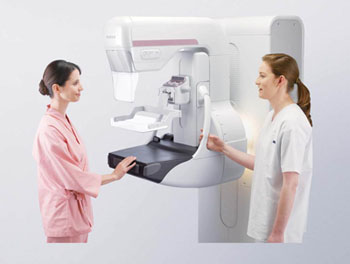Intelligent Imaging System Assists Mammography Technologists
By MedImaging International staff writers
Posted on 10 Apr 2016
A novel mammography system with intelligent image processing supports healthcare professionals in the early detection and diagnosis of breast cancer. Posted on 10 Apr 2016
The Aspire Cristalle is an advanced digital mammography system that optimizes image contrast and dose across all breast types, thanks to a combination of hexagonal close pattern (HCP) capture technology and intelligent image processing, resulting in a reduced acquisition time of 15 seconds. Images are enhanced by intelligent automatic exposure control (iAEC) and image based spectrum conversion (ISC), which analyze the breast for glandular tissue characteristics, detect implants to optimize dose and processing, and precisely tune contrast to adapt for every breast type and to image implants.

Image: The Aspire Cristalle digital mammography system (Photo courtesy of Fujifilm).
Simplicity of operation allows reliable exams quickly and easily, starting from a simple one-button startup to a patented comfort paddle equipped with soft edges, a flexible composition, and a four-way pivot that contours to the individual shape of the breast, in order to apply a gentle, even compression that results in optimal tissue separation. The Aspire Cristalle system is a product of Fujifilm Medical Systems (Tokyo, Japan), and was designed to provide an upgrade path to future technologies.
“Fujifilm is constantly innovating to develop the most advanced digital mammography systems to assist in the early detection of breast cancer,” commented Timothy Gustafson, RT, director of the imaging service at White Memorial Medical Center (Los Angeles, CA, USA). “Aspire Cristalle brings together Fujifilm’s extensive research, expertise, and experience. The technology allows us to continue our mission, providing comprehensive cancer care for our community, combining sophisticated technology with a warm, caring touch.”
HCP is based on hexagonal pixels distributed in the electrical field, which are more efficient than traditional, square pixels; this results in a strong, homogenous signal that provides images with high detective quantum efficiency (DQE) and modulation transfer function (MTF), which delivers exceptionally sharp images, even at low dose, with a small (50 micrometer) pixel size.
Related Links:
Fujifilm Medical Systems














